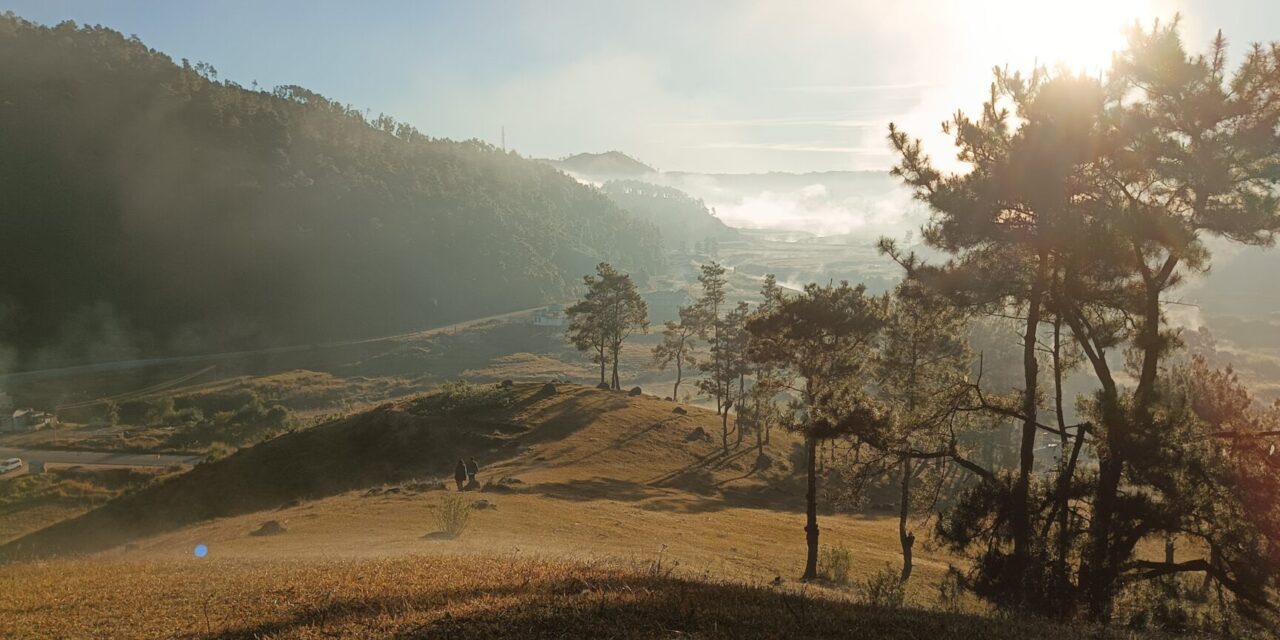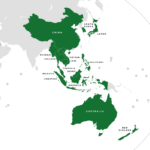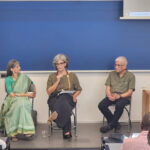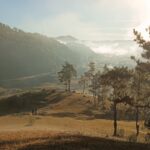Traditional Ecological Knowledge (TEK) is not merely a body of localized wisdom about the natural world—it is a product of a dialectical synthesis of human labor and ecological consciousness. As Boaventura de Sousa Santos says in his book Epistemologies of the South: Justice Against Epistemicide, Traditional Ecological Knowledge (TEK) is not merely a standalone concept, but a vital thread woven into the larger tapestry of subaltern epistemologies—the ways of knowing that are systematically disqualified by the hegemony of Eurocentric modernity. That’s why understanding and learning from TEK of communities from the global south is important. This article is a humble effort to learn from TEK of the Zeliangrong community of Manipur and Nagaland state of India.
The Epistemology of TEK
Traditional Ecological Knowledge (TEK) is not static or mystical but a dynamic practice—forged through generations of hands-on experimentation, observation, and adaptation. It arises from the daily labor of farming, fishing, foraging, and land stewardship, refined through trial and error and encoded in customs, tools, and rituals. Unlike capitalist systems that treat nature as an external resource to dominate, TEK reflects an unalienated relationship with the environment: a dialectical process where communities adjust their practices in response to ecological feedback, ensuring sustainability not as an ideal but as a lived outcome.
TEK is a form of productive force tied to the communal ownership of land and the commons, in direct contrast to capitalist modes that commodify nature, property rights over land and privatize knowledge. As capitalism penetrates indigenous life—through land dispossession, corporate appropriation of bio-knowledge and commodification (Bio-piracy)—TEK becomes endangered. This is not a natural decline but a consequence of capitalist accumulation, that is, primitive accumulation in motion. Thus, preserving TEK is not merely an act of cultural conservation—it is a revolutionary imperative, a struggle against ecological alienation, and a defense of alternative epistemologies rooted in reciprocity, sustainability, and collective labor. TEK, for the fundamental reason that it is closely tied to community ownership of land and other resource, challenges the capitalist logic of exploitation and offers glimpses into non-alienated, ecologically harmonious futures.
Colonialism and modern Western science have violently erased or delegitimize the ecological knowledge of Indigenous peoples and peasants. TEK is a key example of what Boaventura de Sousa Santos calls epistemicide—the killing of knowledge systems that do not conform to the Western canon. Santos argues, for an ecology of knowledges, a pluralistic epistemological stance where TEK and scientific knowledge are seen not as hierarchically opposed, but as different, context-bound systems that can dialogue with and learn from each other.
Traditional Ecological Wisdom of the Zeliangrong Community.
The Zeliangrong people are one of the major indigenous Naga communities living in the tri-junction of Assam, Manipur and Nagaland in India. The term Zeliangrong was created by combining the names of three closely related tribes—Zeme, Liangmei, and Rongmei—deriving the name from the initial syllables of each. This composite identity was formally established with the founding of the Zeliangrong Naga Council on 15th February 1947 at Keishamthong, Imphal[1]. Similar to many other indigenous communities in the world, farming is woven in the culture and rituals of the Zeliangrong peoples. The land is not merely tilled but tended with reverence, and where wisdom ripened over centuries still shapes how seeds are sown and harvests reaped. This is the living heritage of Indigenous Technical Knowledge—time-tested, locally rooted, and deeply entwined with the rhythm of the land and life itself. TEK embodies time-tested strategies that enhance socio-ecological resilience, offering selective advantages for communities facing environmental stress.
In the Peren district, where the hills undulate like a sleeping forest beast, the Zeliangrong community continues to farm with ancestral techniques that mirror the terrain’s demands and the climate’s temperament. While modern livelihoods have begun to trickle into this once exclusively agrarian society—government jobs, trade, contracts—the heart of the people still beats in the fields. Their techniques, drawn from observation, tradition, and ritual, hold within them a knowledge system that has fed families and fostered resilience for generations. And yet, this wisdom teeters on the edge of erasure. Civil society and academia need to learn from TEK and support the rights of the indigenous communities.
Preparing the Earth: A Sacred Ritual
To begin, the land is awakened. For swidden farming (Jhum) the process begins with the removal of understory vegetation followed by the felling of larger trees. The cleared biomass is then burned, which serves the dual purpose of eliminating soil-borne pests and enriching the soil with nutrient-rich ash, providing essential minerals like potassium and phosphorus. As Environmentalist P S Ramakrishnan mentions, contrary to popular beliefs, “fire can be a boon if properly managed. Fire in such situation plays a key role in ensuring ecosystem integrity” (Pp51, The cultural Cradle of Biodiversity, P S Ramakrishnan).
For terrace agriculture the slopes are broken down and the beds leveled with patient care. From December through March, during the dry months, the plots are dug in preparation, exposing pests to sunlight, easing the burden of clearing, and allowing vegetation to dry for the ceremonial burn. Bunds of stone, bamboo, or logs are constructed across slopes, guarding the soil against erosion and channeling the fire’s energy back into the land. This practice, far from destructive, is a cyclical act of renewal—where ash becomes nutrient.
Reading the Signs: Nature as Almanac
The farming calendar of the Zeliangrong people, similar to many other indigenous communities, is based on signals from the surrounding environment. When the Cuckoo sings, all the seeds are sown, because that means the rains are near. When Mechie trees first bloom, it’s time to move rice seedlings to cooler climates, and when Nipe trees bloom, it’s time to move paddy seedlings to warmer climates. It is believed that there won’t be any pest or disease infestation when seeds are sowed during a full moon.
Feeding the Soil, Not Just the People
In Zeliangrong fields, fertility is a loop. Ash from burning, mixed with soil and rice husks, breathes nutrients into seed beds. After harvest, terraces lie fallow, giving back to the soil what the soil has given. Weeds and stubbles are buried to rot into humus. In Jhum fields, a cycle of burning, minimal vegetation removal, and resting fallows keeps the land fertile. After one or two years of cropping, the land is left fallow for an extended period (typically five to ten years) to allow natural regeneration. During this fallow phase, weeds and crop stubbles are left to grow undisturbed, gradually decomposing and enriching the soil. Over time, vegetation regrows, restoring ecological balance and preparing the land for future cultivation cycles.
Importantly, in swidden cultivation, farmers do not remove all species of trees from agricultural plots. They often leaves stumps of trees for quick sprouting and regeneration of forest during fellow periods. Based on experience, they started leaving specific species like Nepalese Alder (Alnus Nepelesis), if present, in situ, at the swidden farming plot. Nepalese Alder is a non-leguminous nitrogen fixing tree species[2].
Terrace plots are primarily used for cultivating paddy. The natural slopes are carefully leveled and sculpted into step-like terraces, each reinforced with bunds that are segmented into smaller sections for greater stability. As the growing season begins, rainwater is harvested from nearby rivers and small irrigation channels, then gently channeled into the fields. Where the terrain poses challenges to direct water flow, hollow bamboo pipes are laid across the plots, guiding the water efficiently to every corner. This system not only ensures even irrigation but also reduces surface runoff and soil erosion, helping to conserve essential nutrients in the soil. Water left on terrace plots rots grasses into green manure. Crop residues are not cast aside—they are offerings returned to the soil, ensuring that life continues to spring forth with each season.
Home gardens and Jhum plots are alive with mixed crops—soybeans, rice beans, yams—each grown where the soil speaks of need and possibility. Legumes on lean soils enrich the earth[3], and creeping vines like pumpkin and gourd trace the field’s edges. Though paddy may grow solitary on its seed bed, it is often cradled between maize stalks or herbs, in a quiet companionship that benefits all.
Guardians of the Crop
To protect what they sow, the Zeliangrong set ingenious defenses. Fire’s smoke and wind-tossed bamboo strips create sound and motion to ward off birds and rodents. Sometimes scarecrows, sometimes simple movements in the field do the trick. Tying plants provides stability—ensuring that the golden heads of rice stand proud until harvest. The sound produced by the wind-driven movement of the split bamboo keeps birds and rats away. Weeds are vanquished with fire, hoe, and hand—especially on sunny days when the sun’s heat wilts their roots. Weeds are either buried to rot or left to dry in the sun, becoming mulch or future manure. Crops like sweet potato, with vigorous growth are planted in weed-prone areas, outcompeting the invaders by sheer vitality.
After the Harvest
Once the grain is threshed, a winnowing basket is used to separate the grains from the chaff so that the latter can be used as manure on the plot. Paddy is carefully sun-dried on woven bamboo mats, a traditional practice that not only hardens the grains—making husk removal easier—but also extends their longevity. Once dried, the grains are stored in elevated bamboo granaries, ingeniously designed to ensure proper aeration and protection from moisture. The raised platforms, perched above ground level, act as a safeguard against rodents and dampness, preserving the harvest from decay and infestation. This age-old method allows the grains to be stored safely for years, ensuring food availability even during lean seasons when fresh supplies are scarce.
Around the fireplace hang garlands of garlic, onions, red chilies—drying in the smoke, storing not just food but flavor and memory. Insect harm is reduced by the fire’s smoke. A fermented product is produced by boiling soybeans. After being boiled and allowed to dry, mustard leaves and the liquid that is extracted from them are turned into delicacies. Harvested bamboo shoots are stored underground after being wrapped in banana leaves. These methods extend bounty into seasons when the earth rests.
Seed selection for next cycle of cropping is a sacred act. Only the healthiest plants are chosen, and their seeds—bold and clean—are dried in the sun, spread over cloth, and stored with care. From cucumbers to chilies, maize to millet, every variety is kept pure, hung near fire or laid beneath sun to ensure vitality. These seeds are more than future crops—they are the core of resilience, passed on from one season to the next.
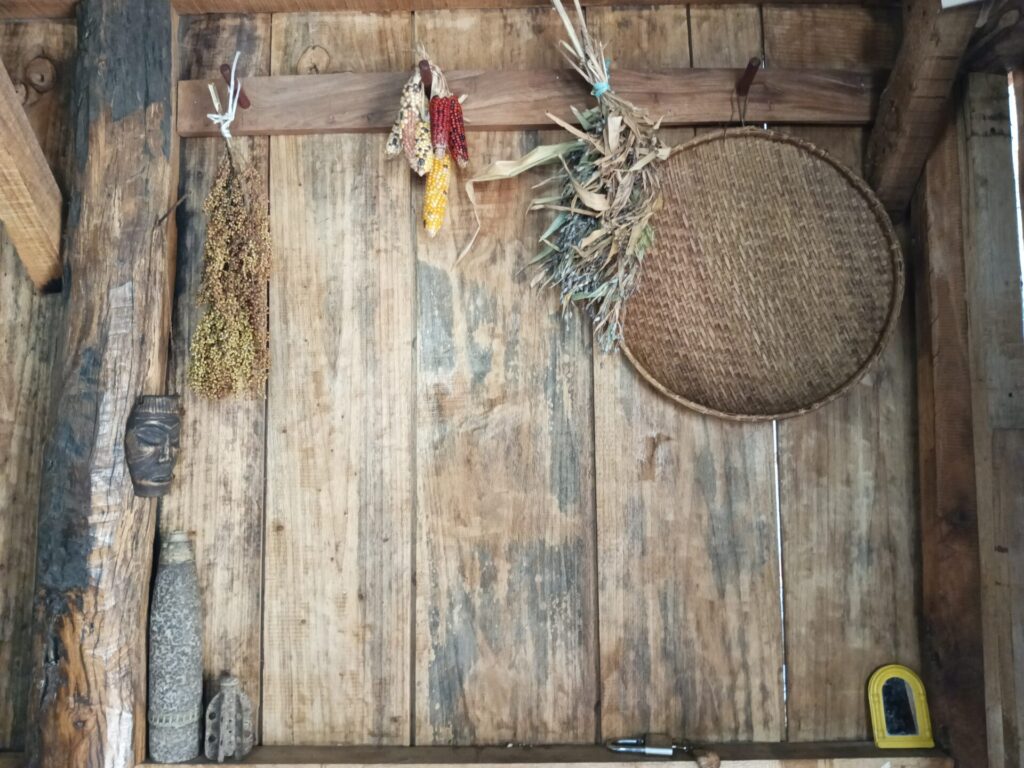
In Closing: A Song of Soil and Spirit
The Zeliangrong’s agricultural knowledge is a living text, etched not in books but in soil, smoke, and seed. Traditional Ecological Knowledge (TEK), as exemplified by the Zeliangrong community of Manipur and Nagaland, is not merely a residue of the past but a living archive of ecological wisdom—an organic synthesis of labor, landscape, and cultural memory.
As Boaventura de Sousa Santos reminds us, acknowledging TEK is an act of epistemic justice—a stand against the silencing of subaltern knowledges in the face of capitalist homogenization and ecological degradation. The farming practices, seed preservation methods, and rituals of the Zeliangrong are not simply techniques; they are gestures of survival, sovereignty, and sustainability. In recognising and respecting them, we are not simply preserving culture—we are reimagining futures that honour diversity, resilience, and reciprocal relationships with the Earth.
*The photos are just representative. Photos are not from the community about whom the article is.
——
Endnotes:
[1] Its foundation was rooted in shared folklore, legends, and traditions, and was agreed upon by the intellectuals and leaders of the constituent tribes. Despite longstanding efforts to gain recognition under the unified name Zeliangrong in India’s Scheduled Tribe registry, they continue to be officially listed under the colonial-era terms Kabui and Kacha Naga in Manipur—names the community considers inaccurate and imposed by British administrators, lacking true representation of their identity.
[2] This Species can infuse 125 kg nigrogen per hectre per yer in peak growth. The presence of nepalese Alder species in field enable to recover during 5 year fellow pwriod all the nitrogen lost during cropping period, which otherwise would have take 10-15 years. (Pp133, The cultural Cradle of Biodiversity, P S Ramakrishnan).
[3] Legumes enrich the soil primarily through biological nitrogen fixation (BNF), a process where symbiotic bacteria (e.g., Rhizobium) convert atmospheric nitrogen (N₂) into plant-usable forms (ammonia).

